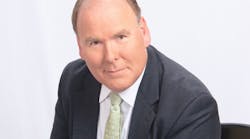To get the most out of their workforce, today’s business leaders may need to look at their own role – and their workers – a bit differently than leaders did decades ago. A strong and effective leader certainly stands at the top of a hierarchy, but great leaders today don’t act hierarchically.
While people thrive under great leaders, in today’s business world they are also looking for a safe haven work environment where respect, trust and encouragement are bedrocks of the work culture.
Here are three ways a company leader can get people to follow, and do so without being punitive and domineering:
Don’t Treat Employees Like Children
The level of complexity and the pace of change that leaders at all levels face today is unprecedented. The pressure for achievement is intense and when mistakes are made, or when staff show up disengaged, tempers can flare. Frustration and anger are powerful emotions, and when leaders get flooded with these feelings they typically fall into a model of leadership and accountability deeply embedded in their memories – parenting, So they demote their employees to the role of children.But most adults do not want to be patronized or treated like children.
Those ways don’t inspire employees to thrive in their work environment or put forth their best effort. Employees today, especially among the current generation entering the workplace, are far more likely to quit or deliberately underperform under those conditions. That’s bad for morale, damages the culture, and encourages turnover.
Be Positive
A leader who cultivates a positive culture can reap myriad benefits. Research of 16 different industries, conducted by Dr. Kim Cameron at the University of Michigan’s Stephen M. Ross School of Business, found a significant relationship between “virtuousness” in the workplace – forgiveness, compassion, optimism and trustworthiness – and improvements in everything from profitability and productivity to quality, innovation, customer satisfaction and employee retention.
Leaders need to move away from the CPO template, where they are the Chief Punishment Officer, and instead move to more brain-friendly modes as mentors, coaches, good listeners and captains of positive recognition.
Don’t be Subverted by Subcultures
A company’s top leader needs to ensure the next layers of leadership are consistently echoing the company’s ethos at every level throughout the enterprise. Hold managers and supervisors accountable for communicating the corporate culture and living the organization’s values Don’t let divergent micro-cultures or siloed departments hijack the enterprise’s culture.
Having strong and effective leaders as managers and supervisors creates the consistent conditions essential to healthy and sustainable workplace cultures.There is a very high emotional cost in making difficult choices that affect other people’s lives. Most of us would prefer having those decisions made by someone we trust and have faith in, not someone who brandishes a title or threats of punitive consequences in order to achieve authority. The most successful leaders in the new era of work now underway will balance strength and determination with empathy and understanding.
Don Rheem is the CEO of E3 Solutions and author of Thrive By Design: The Neuroscience that Drives High-Performance Cultures. He is a former science advisor to Congress and the Secretary of the U.S. Department of Health and Human Services.



